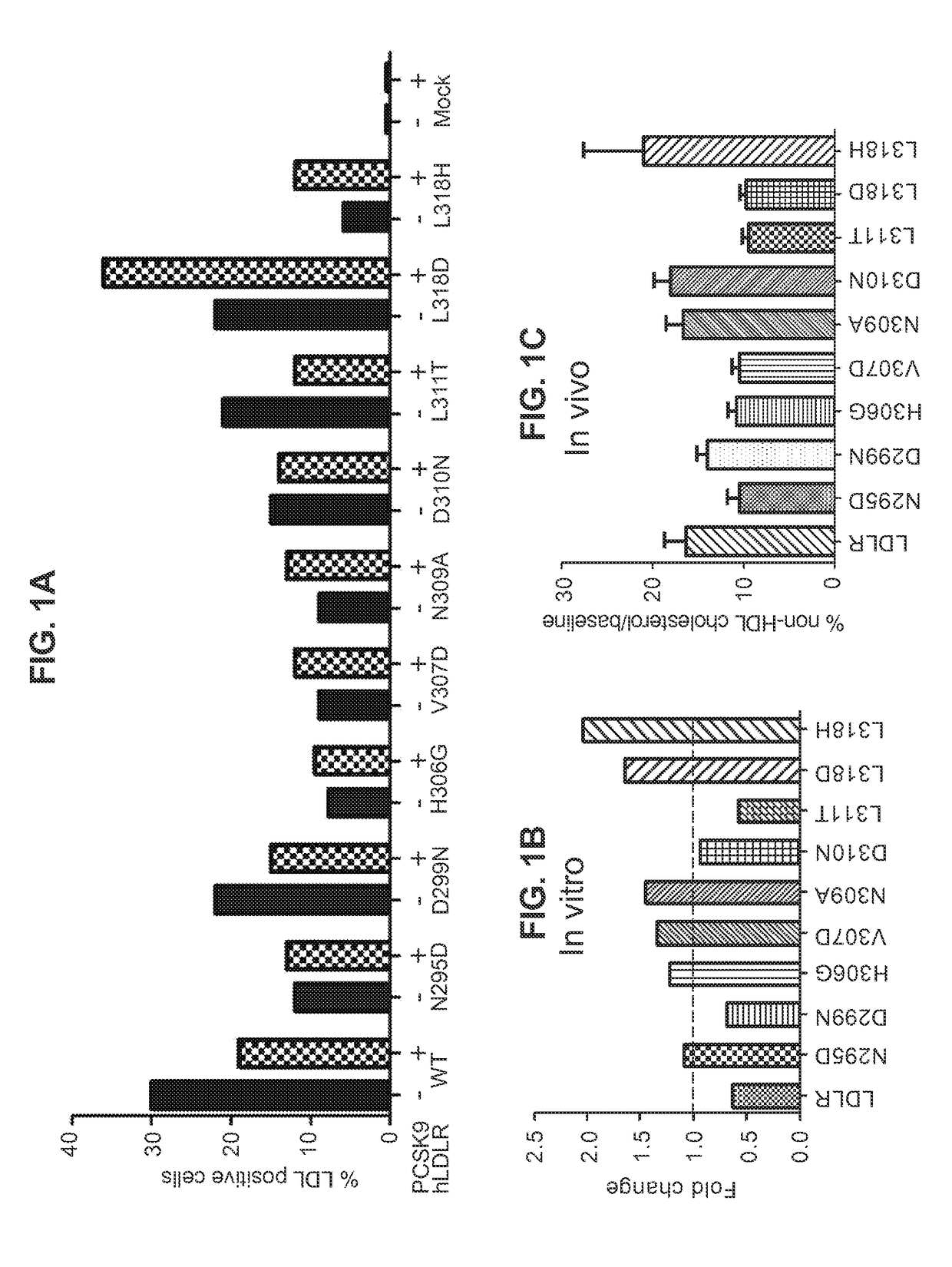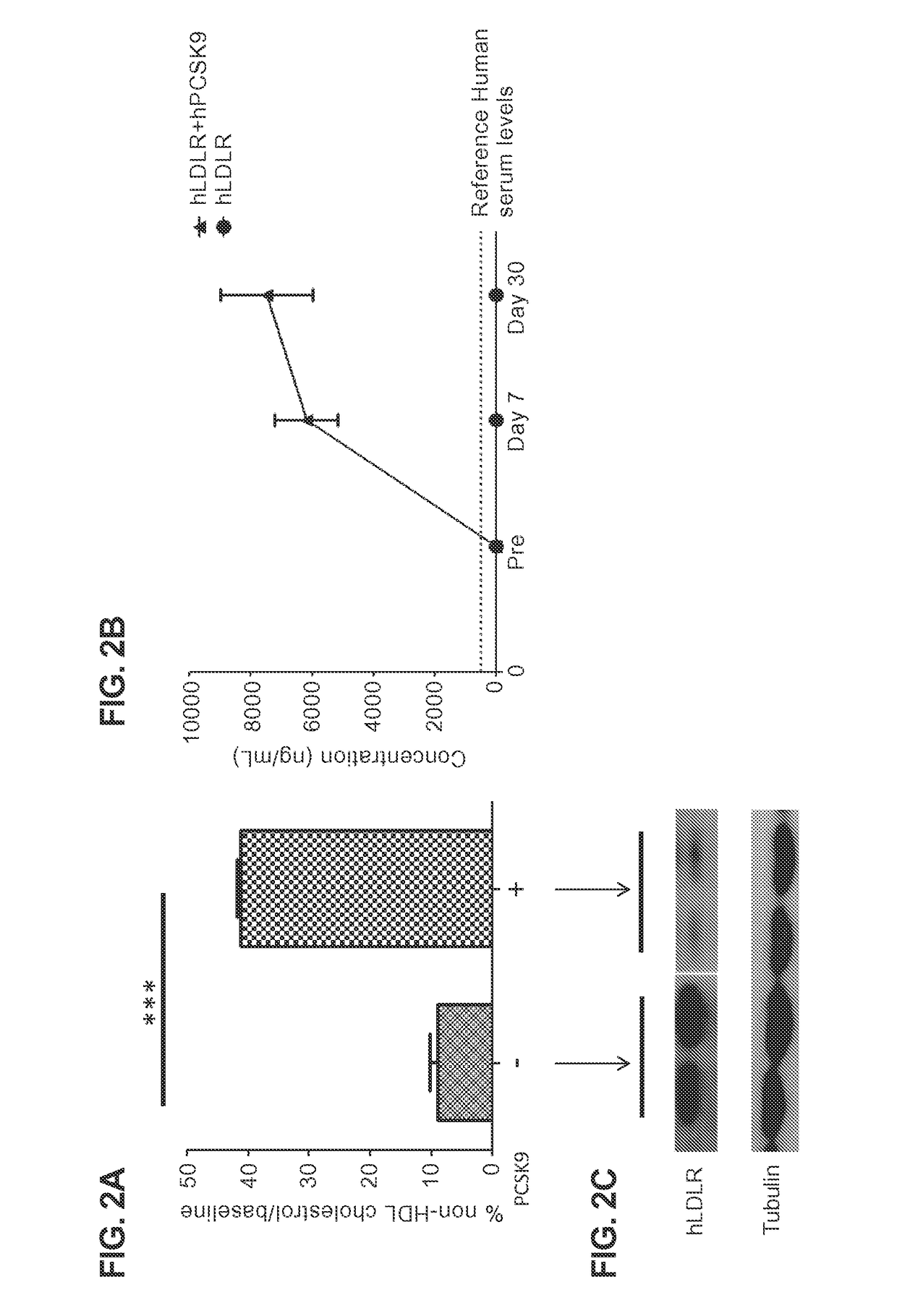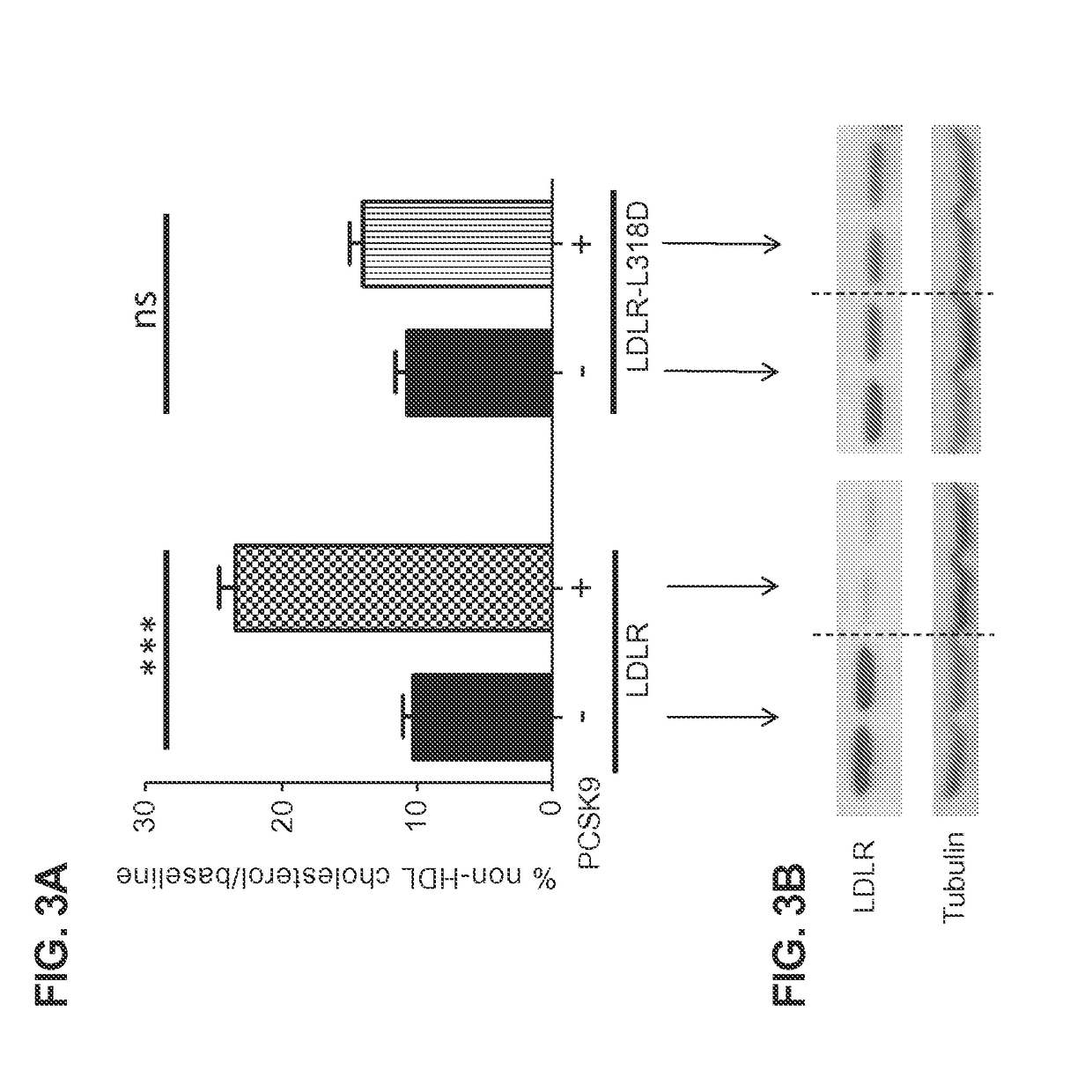Ldlr variants and their use in compositions for reducing cholesterol levels
- Summary
- Abstract
- Description
- Claims
- Application Information
AI Technical Summary
Benefits of technology
Problems solved by technology
Method used
Image
Examples
example 1
AAV Vectors Expressing LDLR Gain-of-Function Variants Demonstrate Increased Efficacy in Mouse Models of Familial Hypercholesterolemia
[0069]A. Experimental Animals
[0070]All animal studies were approved by the institutional review board (IRB) at the University of Pennsylvania. LDLR− / −, APOBEC-1− / − double knockout mice (DKO) and LDLR− / −, APOBEC-1− / −, human ApoB100 transgenic (LAHB) were maintained at the University of Pennsylvania. These mice overexpress hPCSK9. The absence of endogenous mouse LDLR expression in this animal model permits evaluation of hLDLR transgene expression without interference from mouse LDLR. Overexpression of hPCSK9 is achieved by coadministering an AAV vector expressing hPCSK9 (AAV9.TBG.hPCSK9), the preparation of which is described in Part C of this Example.
[0071]6-8 week old male mice were injected intravenously (tail vein) with vector diluted in phosphate buffered saline (PBS) in a total volume of 100 μL. Serum was collected pre and post vector administratio...
example 2
hLDLR-L318D\K809R\C818A Avoids Regulation by Both PCSK9 and IDOL
[0097]The L318D, K809R and C818A amino acid substitutions were cloned into a single vector to create a construct that would be resistant to regulation by both pathways. The vector was administered to DKO mice at a low dose (3×109 GC), when evaluating the IDOL escape mutations; or at a higher dose (5×1010 GC), when evaluating the PCSK9 escape mutation. When administered at a low dose, hLDLR-L318D\K809R\C818A was comparable to wild type hLDLR (p>0.05) in that only a modest decrease in serum cholesterol was realized following either vector administration (FIG. 5A). However when administered in the presence of hIDOL, only the mutant vector showed any resistance to hIDOL in that serum cholesterol levels remained significantly lower than that seen in wild type hLDLR plus hIDOL (p=0.0002). Immunoblotting of liver samples confirmed that the mutant vector was more resistant to hIDOL mediated degradation (FIG. 5A). In the paralle...
example 3
Comparison of hLDLR Variants in a Mouse Model of Familial Hypercholesterolemia
[0098]The panel of hLDLR carrying single amino acid substitutions that were expected to avoid PCSK9 regulation were screened by administering to LDLR− / −, APOBEC− / − double knockout mice (DKOs). Animals were injected intravenously (i.v. tail vein) with 3×1010 GC of AAV8.TBG.hLDLR or one of the hLDLR variants that was expected to avoid hPCSK9 regulation. Reduction in serum levels of non-HDL cholesterol was used as a surrogate for comparing receptor activity from the different constructs. Serum was collected from animals by retro-orbital bleeds before and 30 days after vector administration and cholesterol levels analyzed using a MIRA analyzer (Roche). Non-HDL cholesterol levels were determined by subtracting the HDL component from total cholesterol. FIG. 6 shows percent decline in non-HDL levels over baseline in animals following vector administration.
[0099]This study was repeated under the same conditions, w...
PUM
| Property | Measurement | Unit |
|---|---|---|
| Level | aaaaa | aaaaa |
Abstract
Description
Claims
Application Information
 Login to View More
Login to View More - R&D
- Intellectual Property
- Life Sciences
- Materials
- Tech Scout
- Unparalleled Data Quality
- Higher Quality Content
- 60% Fewer Hallucinations
Browse by: Latest US Patents, China's latest patents, Technical Efficacy Thesaurus, Application Domain, Technology Topic, Popular Technical Reports.
© 2025 PatSnap. All rights reserved.Legal|Privacy policy|Modern Slavery Act Transparency Statement|Sitemap|About US| Contact US: help@patsnap.com



